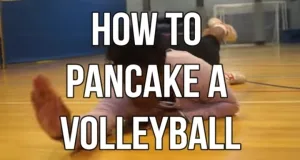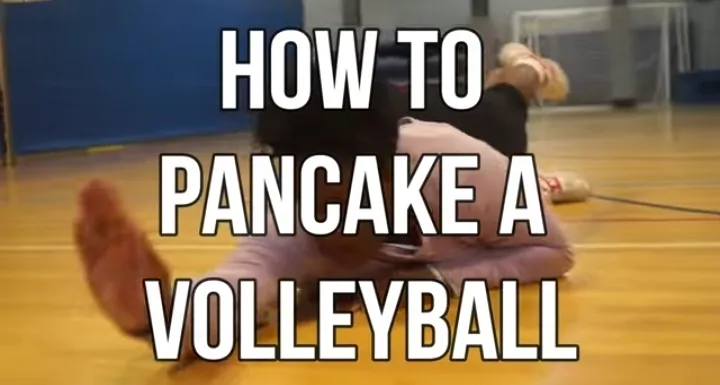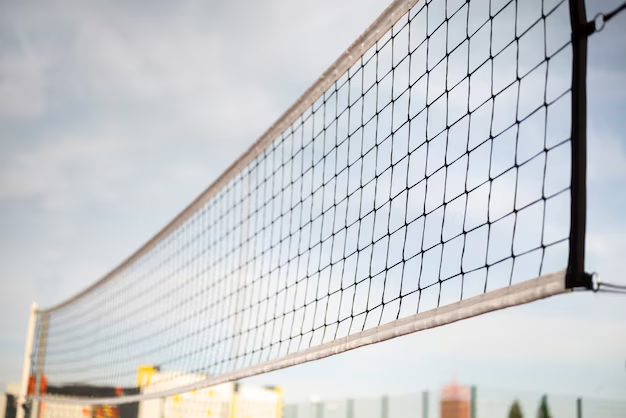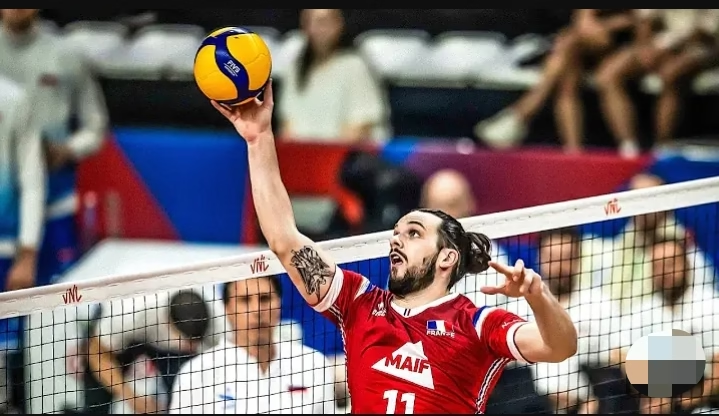What’s up, welcome? This is Josah on volleyball.com.ng. In this article, we will look at the volleyball pancake. This topic was suggested by one of our readers, Ice Jager.
So thank you so much for this topic suggestion. If you have a suggestion or recommendation, drop a comment in the comments section.
One of the most exciting moves in volleyball is the pancake. When executed correctly, it can energize your team and even help you win a crucial point. But what exactly is a pancake, and how can you master it?
What is a pancake?
A pancake in volleyball happens when a player flattens their hand against the ground just before the ball lands in that exact spot, with the goal of keeping the ball in play.
This move requires perfect timing, precise placement, and a lot of guts. You won’t use a pancake when the ball comes straight at you—that’s when you pass. Even a ball off to the side is usually saved by diving and popping the ball back into play.
When to Use Volleyball Pancake

A pancake is typically used when the ball is dropping fast and diving is your only option to keep it in play. This move is rare, even for well-trained players, which makes it special. It takes a skilled player to recognize and seize the opportunity for a pancake. Although often overlooked, learning this skill, especially as a younger player, prepares you for higher-level volleyball.
See also: Volleyball Bumping Drills for Beginners
Important aspects of Volleyball pancake
The Dive:
The dive is crucial because if you’re not diving, you don’t need to pancake. Younger players might try to pancake at inappropriate times initially. But as you read this article, you can make corrections on when to use it. Pancakes are usually done when moving forward quickly, but they can also be performed when diving to the side. Practice how to push through the dive rather than fall and catch yourself.
See Also: Discover Tips for Setting in Volleyball
The Reach:
You can use either hand to pancake, but make sure the hand is flat and slightly pressed to the ground to avoid weird bounces or injuries. Learn to be comfortable when using both hands.
The Recovery:
After a pancake, it’s important to get up quickly and out of the way so your teammates can play the next ball. Practice to roll out of a sideways dive or jump away from the nearest teammate after a forward dive. Quick recovery helps the team maintain momentum and increases the chances of winning the point.
The mental aspects of a pancake
Determination:
Players need to be completely focused and eager to defend their side of the net. This determination is crucial for generating pancakes during a match.
Sacrifice:
Players have to be willing to throw themselves on the ground to save the ball. This requires a bit of craziness and a team culture that values effort, even if the attempt fails.
Trust:
Players must trust that their effort will be appreciated and that their team will move to play the ball after a pancake. They also need to trust that they won’t be trampled while recovering.
Watch the video below on how to pancake a volleyball.
Pancake volleyball drills
Learn how to pancake a volleyball by this important drills:
1. Partner Practice:
One partner stands while the other lays on the floor with their arms outstretched and their hands flat. The standing player drops the ball on the hand of the other player 10 times to understand the best hand position. Switch places.
See Also: Volleyball Ready Position
2. Progression:
The standing player tosses the ball from a short distance, and the player on the ground works on tracking the ball and placing their hand correctly. Do this 10 times each before switching.
3. Diving Practice:
Have one player on hands and knees dive to the ball as the other player tosses it. Emphasize pushing through the dive rather than falling.
3. Kneeling Dive:
Start on your knees and dive forward or to the side to get the ball. Switch 10 times.
4. Ready Position:
Toss the ball to a player in a ready position. Ensure there’s enough space and no obstacles around. Proceed slowly, and have the passer signal when ready.
Running this drill allows you to test your pancake skills, like a slower game of Tip and Chip or a full scrimmage. Avoid moving directly into serving or hitting lines, which might cause players to forget what they just learned.
Pancakes in volleyball are rare, and the rewards from this training might not be immediate. However, if you remind yourself of this skill and learn it, you’ll be pleasantly surprised when you finally pull it off.
Share your thoughts.
How do you teach pancakes? What other mental skills do your players need to execute a successful pancake? How has a simple pancake impacted your team? Share your thoughts and experiences.




